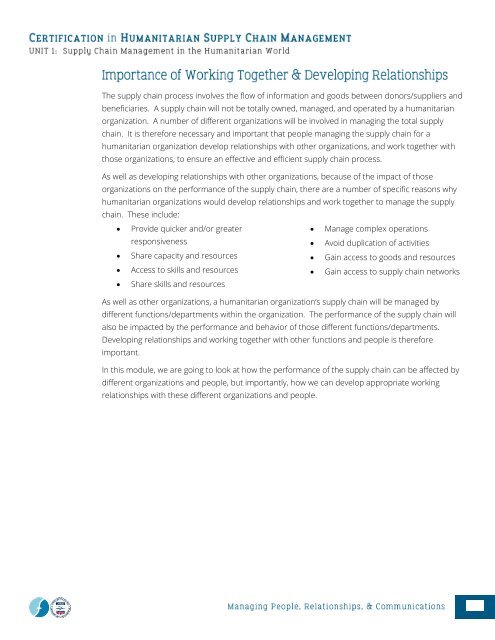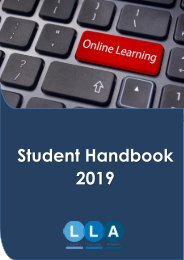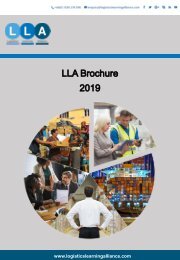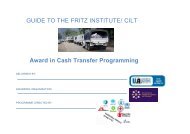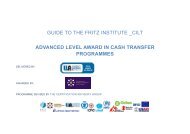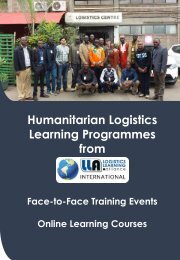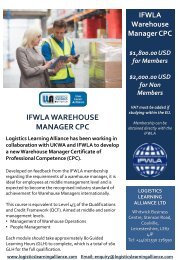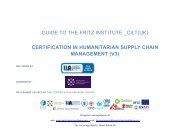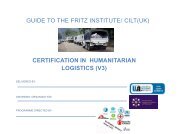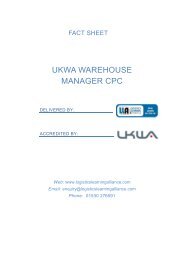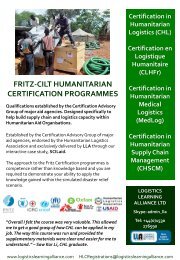CHSCM 3.0 - Unit 1 - SCM in the Humanitarian World
Learning Materials for Unit 1 of the Certification in Humanitarian Supply Chain Management (CHSCM).
Learning Materials for Unit 1 of the Certification in Humanitarian Supply Chain Management (CHSCM).
You also want an ePaper? Increase the reach of your titles
YUMPU automatically turns print PDFs into web optimized ePapers that Google loves.
The supply cha<strong>in</strong> process <strong>in</strong>volves <strong>the</strong> flow of <strong>in</strong>formation and goods between donors/suppliers and<br />
beneficiaries. A supply cha<strong>in</strong> will not be totally owned, managed, and operated by a humanitarian<br />
organization. A number of different organizations will be <strong>in</strong>volved <strong>in</strong> manag<strong>in</strong>g <strong>the</strong> total supply<br />
cha<strong>in</strong>. It is <strong>the</strong>refore necessary and important that people manag<strong>in</strong>g <strong>the</strong> supply cha<strong>in</strong> for a<br />
humanitarian organization develop relationships with o<strong>the</strong>r organizations, and work toge<strong>the</strong>r with<br />
those organizations, to ensure an effective and efficient supply cha<strong>in</strong> process.<br />
As well as develop<strong>in</strong>g relationships with o<strong>the</strong>r organizations, because of <strong>the</strong> impact of those<br />
organizations on <strong>the</strong> performance of <strong>the</strong> supply cha<strong>in</strong>, <strong>the</strong>re are a number of specific reasons why<br />
humanitarian organizations would develop relationships and work toge<strong>the</strong>r to manage <strong>the</strong> supply<br />
cha<strong>in</strong>. These <strong>in</strong>clude:<br />
• Provide quicker and/or greater<br />
• Manage complex operations<br />
responsiveness<br />
• Avoid duplication of activities<br />
• Share capacity and resources<br />
• Ga<strong>in</strong> access to goods and resources<br />
• Access to skills and resources<br />
• Ga<strong>in</strong> access to supply cha<strong>in</strong> networks<br />
• Share skills and resources<br />
As well as o<strong>the</strong>r organizations, a humanitarian organization’s supply cha<strong>in</strong> will be managed by<br />
different functions/departments with<strong>in</strong> <strong>the</strong> organization. The performance of <strong>the</strong> supply cha<strong>in</strong> will<br />
also be impacted by <strong>the</strong> performance and behavior of those different functions/departments.<br />
Develop<strong>in</strong>g relationships and work<strong>in</strong>g toge<strong>the</strong>r with o<strong>the</strong>r functions and people is <strong>the</strong>refore<br />
important.<br />
In this module, we are go<strong>in</strong>g to look at how <strong>the</strong> performance of <strong>the</strong> supply cha<strong>in</strong> can be affected by<br />
different organizations and people, but importantly, how we can develop appropriate work<strong>in</strong>g<br />
relationships with <strong>the</strong>se different organizations and people.


